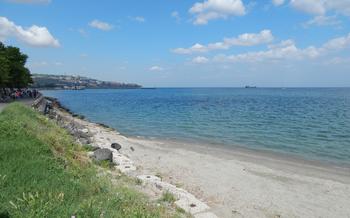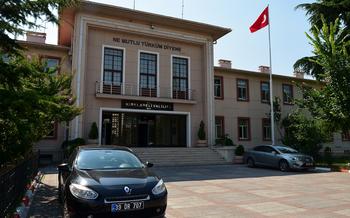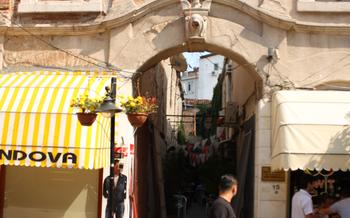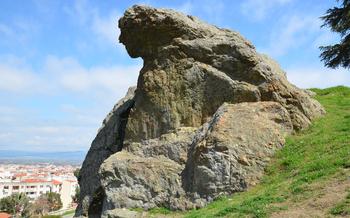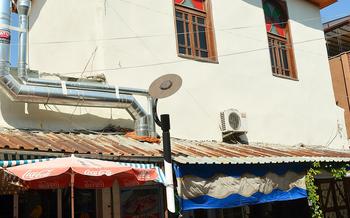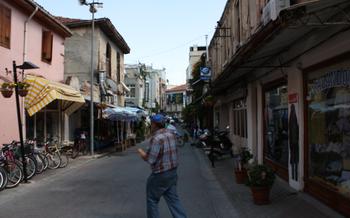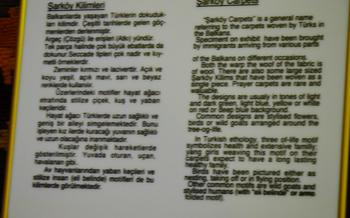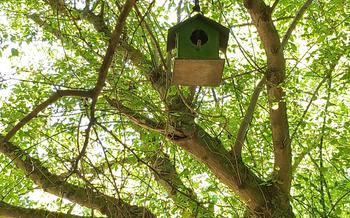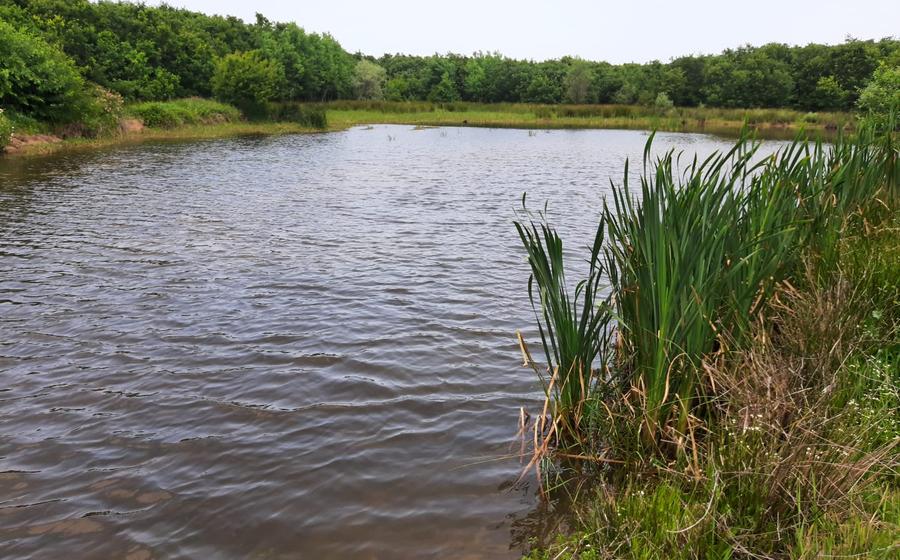
Alpullu King's Rock Tombs
- History of the Alpullu King's Rock Tombs
- Location and Directions
- Architectural Features
- Burials and Artifacts
- Legends and Folklore
- Exploration and Discovery
- Restoration and Preservation
- Nearby Attractions
- Cultural Significance
- Local Cuisine and Hospitality
- Photography and Videography:
- Ethical Considerations
- Educational Programs:
- Insider Tip: Unveiling the Secrets of the Alpullu King's Rock Tombs
History of the Alpullu King's Rock Tombs
Historical Significance: The Alpullu King's Rock Tombs are a testament to the rich history and cultural heritage of Turkey. These ancient tombs, carved into the rocky cliffs of Kırklareli, date back to the 4th century BC and are believed to be the final resting place of several Thracian kings and their families. The tombs offer a glimpse into the lives, beliefs, and customs of these ancient rulers and provide valuable insights into the history of the region.
Era of the Kings: The Thracians, who ruled over this region during the Hellenistic period, were known for their fierce warriors and their elaborate burial practices. The Alpullu King's Rock Tombs exemplify the grandeur and opulence associated with Thracian royalty. These tombs were meticulously carved into the rock, showcasing the exceptional craftsmanship and artistry of the time.
Construction Theories: The exact methods used to construct these tombs remain a subject of debate among archaeologists. Some believe that the tombs were carved directly into the rock using chisels and hammers, while others suggest that the rock was first softened by heating it with fire and then carved. The intricate carvings and inscriptions adorning the tombs further demonstrate the skill and dedication of the ancient craftsmen.
Archaeological Excavations: Archaeological excavations at the Alpullu King's Rock Tombs have unearthed a wealth of artifacts, including jewelry, pottery, weapons, and other personal belongings. These discoveries have shed light on the burial customs and practices of the Thracians and provided valuable insights into their daily lives. Ongoing excavations continue to reveal new information about these ancient tombs and the people who were laid to rest within them.
Location and Directions
The Alpullu King's Rock Tombs are situated in the village of Alpullu, approximately 20 kilometers northwest of the city of Kırklareli in Turkey's Thrace region. The tombs are located on a hilltop overlooking the surrounding countryside, offering breathtaking views of the region.
Reaching the tombs is relatively easy, with several transportation options available. Visitors can opt to drive their own vehicle or rent a car from Kırklareli, which takes about 30 minutes. Public transportation is also an option, with regular buses connecting Kırklareli to Alpullu village. From the village, visitors can take a short walk or taxi to the tombs.
The tombs are open to the public daily, with guided tours available for those who wish to learn more about their history and significance. Local guides can be arranged through the Kırklareli Tourism Information Office or directly at the tombs.
Architectural Features
The Alpullu King's Rock Tombs stand out for their unique rock-cut architecture, a testament to the skill and artistry of ancient craftsmen. Carved directly into the rocky hillside, the tombs consist of multiple chambers and passageways, each with its own distinctive features.
The exterior of the tombs is marked by intricate carvings and inscriptions, depicting various symbols and motifs. These carvings often include representations of animals, plants, and geometric patterns, each holding symbolic meaning within the ancient Thracian culture. The facades of the tombs are adorned with elaborate doorways and lintels, adding to their grandeur and architectural significance.
The interiors of the tombs are equally impressive, featuring spacious chambers with high ceilings and carefully carved niches and alcoves. These chambers were likely used for burial rituals and ceremonies, and their walls are adorned with additional carvings and inscriptions, providing valuable insights into the beliefs and practices of the Thracian kings.
The overall design and layout of the tombs reflect the architectural influences of various ancient civilizations, including the Greeks, Persians, and Romans. The combination of these influences creates a unique and awe-inspiring architectural style that sets the Alpullu King's Rock Tombs apart from other ancient burial sites in the region.
Burials and Artifacts
The Alpullu King's Rock Tombs have yielded a wealth of archaeological findings, shedding light on the burial customs and culture of the ancient rulers interred within. Excavations have uncovered the remains of several individuals, including kings, queens, and other members of the royal family. These burials were accompanied by a variety of grave goods, offering valuable insights into the personal belongings and symbols of power associated with the deceased.
Among the artifacts discovered in the tombs are jewelry, pottery, weapons, and tools. These objects provide clues about the social status, wealth, and daily lives of the individuals buried there. Gold and silver jewelry, including necklaces, bracelets, and earrings, adorned the bodies of the deceased, showcasing their opulence and love of adornment. Intricately decorated pottery vessels, both functional and ceremonial, accompanied the burials, symbolizing the continuation of daily rituals in the afterlife.
Weapons, such as swords, daggers, and arrowheads, were found alongside the male burials, indicating their martial prowess and the importance of warfare in their society. Tools, such as agricultural implements and metalworking tools, were also present, suggesting the deceased's involvement in various aspects of daily life. These artifacts provide a glimpse into the economic activities and technological advancements of the ancient civilization.
The artifacts unearthed from the Alpullu King's Rock Tombs are currently housed in various museums and institutions in Turkey, where they are preserved and studied by archaeologists and historians. These objects serve as tangible links to the past, helping us understand the lives, beliefs, and customs of the ancient kings and queens who ruled over this land.
Legends and Folklore
The Alpullu King's Rock Tombs are steeped in a rich tapestry of local legends and folklore, adding an air of mystery and enchantment to the site. Stories have been passed down through generations, intertwining the tombs with the lives and beliefs of the local people.
One prominent legend tells of a powerful king buried in one of the tombs who possessed a magical sword. It is said that the sword could grant any wish to its wielder, but only if they were pure of heart. Many have tried to claim the sword, but none have been worthy, and it remains hidden within the tomb, waiting for its true master.
Another tale speaks of a secret chamber hidden beneath the tombs, filled with unimaginable treasures and guarded by ancient spirits. Only those who are brave enough to face the challenges and solve the riddles that protect the chamber can claim its riches.
Folklore also attributes mystical powers to the tombs. Some believe that the spirits of the buried kings can be invoked by performing certain rituals, while others claim that the tombs can grant wishes or even heal illnesses. These beliefs have led to the tombs becoming a pilgrimage site for those seeking spiritual guidance or miraculous interventions.
The legends and folklore surrounding the Alpullu King's Rock Tombs have woven themselves into the fabric of the local culture, adding a layer of enchantment to this already awe-inspiring site. These stories continue to captivate visitors, inviting them to explore not only the physical remains of the tombs but also the rich tapestry of beliefs and traditions that have grown up around them.
Exploration and Discovery
The initial discovery of the Alpullu King's Rock Tombs is shrouded in mystery and folklore. According to local legends, the tombs were accidentally stumbled upon by a shepherd boy who was searching for his lost sheep. However, it was not until the early 20th century that archaeologists began to take a serious interest in the site.
In 1925, a team of Turkish archaeologists led by Professor Ekrem Akurgal conducted the first systematic excavation of the tombs. They uncovered several burial chambers, revealing the intricate carvings and inscriptions that adorned the walls. The team also discovered a wealth of artifacts, including jewelry, pottery, and weapons, which provided valuable insights into the lives and customs of the ancient kings buried there.
In the decades that followed, further excavations were carried out by both Turkish and international archaeologists. These excavations revealed additional tombs and artifacts, helping to piece together the history of the site. Today, the Alpullu King's Rock Tombs stand as a testament to the skill and ingenuity of the ancient craftsmen who created them, offering a glimpse into a fascinating chapter of Turkish history.
Restoration and Preservation
The Alpullu King's Rock Tombs have undergone significant restoration and preservation efforts to ensure their longevity for future generations. The primary challenge in maintaining the integrity of these rock-cut structures lies in their exposure to natural elements and the passage of time. Erosion, weathering, and seismic activity pose risks to the delicate carvings and inscriptions.
To address these challenges, local authorities and organizations have implemented various conservation techniques. Regular monitoring and maintenance are carried out to identify and repair any structural damage or deterioration. Specialized cleaning methods are employed to remove dirt, moss, and harmful substances without damaging the original surfaces.
In addition, protective measures have been taken to shield the tombs from further erosion and weathering. Drainage systems have been installed to divert rainwater and prevent water seepage into the rock formations. Metal supports and reinforcements have been strategically placed to stabilize weakened areas and prevent collapse.
The restoration and preservation efforts at the Alpullu King's Rock Tombs are a testament to the importance of safeguarding these ancient treasures for future generations. By employing modern conservation techniques and working in collaboration with experts, local authorities are committed to ensuring that these remarkable tombs continue to stand as a testament to the ingenuity and artistry of ancient civilizations.
Nearby Attractions
DISCOVER THE RICH HISTORY AND BEAUTY OF KIRKLARELI
A visit to the Alpullu King's Rock Tombs offers an opportunity to delve into the rich history and cultural heritage of Kırklareli. Beyond the tombs themselves, the region boasts a wealth of other historical sites and landmarks that are sure to captivate history enthusiasts and culture seekers.
Combine your visit to the tombs with a trip to the Kırklareli Museum, which houses a collection of artifacts and exhibits that provide a comprehensive overview of the region's past. Don't miss the Kırklareli Castle, a magnificent medieval fortress that offers breathtaking panoramic views of the city and the surrounding countryside.
For those tertarik with sacred architecture, the Fatih Mosque and the Ali Pasha Mosque are must-see attractions. These stunning mosques showcase intricate Ottoman architecture and offer a glimpse into the region's religious heritage.
Nature enthusiasts will find much to explore in the Kırklareli countryside. The Istranca Mountains offer scenic hiking trails and opportunities for wildlife spotting, while the Lüleburgaz Lake is a popular spot for fishing, boating, and birdwatching.
For a unique cultural experience, visit the Kırklareli Pazarı, a traditional Turkish market where you can find everything from fresh produce and handmade crafts to local delicacies.
Whether you're interested in history, culture, nature, or simply soaking up the local atmosphere, Kırklareli has something to offer every visitor. Plan a day trip or a longer stay to fully immerse yourself in the region's rich tapestry of experiences.
Cultural Significance
The Alpullu King's Rock Tombs hold immense cultural significance in the context of Turkish history and culture. They stand as a testament to the ingenuity and craftsmanship of ancient civilizations, showcasing the advanced architectural techniques and artistic skills of the Thracians. These tombs represent a tangible link to the past, allowing us to delve into the rich history and traditions of the region.
The tombs serve as a reminder of the grandeur and power of the Thracian kingdoms, shedding light on their political and social organization. They provide valuable insights into the funerary practices and beliefs of the Thracians, offering a glimpse into their spiritual world and the importance they placed on the afterlife.
Moreover, the tombs have become an integral part of the cultural identity of Kırklareli and Turkey as a whole. They are a source of pride for the local community and attract visitors from all over the country and beyond. The tombs have been featured in numerous publications, documentaries, and educational programs, contributing to the dissemination of knowledge about ancient Thracian culture.
Preserving and promoting the cultural heritage of the Alpullu King's Rock Tombs is essential for fostering a sense of cultural continuity and appreciation for history. These tombs serve as a reminder of the enduring legacy of past civilizations and their significant contributions to the cultural tapestry of the region.
Local Cuisine and Hospitality
Visiting Alpullu King's Rock Tombs offers a unique opportunity to immerse yourself in the rich culinary traditions of Kırklareli. The region is renowned for its delectable cuisine, which blends Turkish and Balkan influences, creating a diverse array of flavors and dishes.
Indulge in the tantalizing Kırklareli Köftesi, succulent meatballs grilled to perfection and served with a tangy tomato sauce. For a taste of local bread, try the Kırklareli Pidesi, a thin and crispy flatbread often topped with cheese, minced meat, or vegetables.
Don't miss the Çöp Şiş, tender lamb skewers grilled over an open fire and seasoned with aromatic spices. Pair your meal with a refreshing glass of ayran, a traditional Turkish yogurt drink, or a cup of salep, a warm and comforting beverage made from orchid roots.
To satisfy your sweet tooth, sample the Kırklareli Ezmesi, a delectable dessert made from sesame paste and honey, or the Kırklareli Lokumu, a Turkish delight flavored with rose water and pistachios.
When visiting the tombs, take the time to explore the local markets and shops, where you can find an array of fresh produce, spices, and traditional Turkish handicrafts. Experience the warmth and hospitality of the local people, who are always eager to share their culture and culinary delights with visitors.
Photography and Videography:
The Alpullu King's Rock Tombs are a treasure trove for photographers and videographers, offering a unique opportunity to capture the beauty and majesty of ancient rock-cut architecture. However, it's important to approach photography and videography at the site with respect and responsibility.
When taking photos or videos, be sure to:
-
Respect the sanctity of the site. Avoid behavior that could damage or disturb the tombs, such as using flash photography or climbing on the structures.
-
Consider the lighting conditions. The best time to take photos is during the golden hours of sunrise and sunset, when the light is soft and warm, casting long shadows that enhance the dramatic features of the tombs.
-
Use a tripod. A tripod will help you stabilize your camera and capture sharp, clear photos, especially in low-light conditions.
-
Capture the details. Take your time to explore the tombs and capture the intricate carvings and inscriptions that adorn the walls and ceilings. These details provide valuable insights into the symbolism and significance of the tombs.
-
Share responsibly. When sharing your photos and videos online, be sure to credit the site and provide accurate information about its history and significance. This helps to promote cultural heritage and educate others about the importance of the tombs.
Ethical Considerations
When exploring the Alpullu King's Rock Tombs, it's crucial to approach the site with respect and mindfulness. These tombs are not just historical monuments; they are also the final resting places of ancient kings and individuals. Visitors should treat the site with the utmost respect, ensuring their actions do not disturb the sanctity of the tombs or the spirits believed to reside there.
Responsible tourism practices are essential at the tombs. Visitors should stay on designated paths, avoiding any actions that could damage the fragile rock-cut structures or the delicate carvings and inscriptions. Touching or leaning against the carvings is strongly discouraged, as it can cause wear and erosion over time.
Ethical storytelling is equally important when sharing experiences of the tombs. Visitors should be mindful of the cultural and historical significance of the site and avoid sensationalizing or trivializing its importance. Accurate and respectful representation of the tombs in travel narratives helps preserve their integrity and promotes a deeper understanding of ancient civilizations.
By following these ethical considerations, visitors can contribute to the preservation of the Alpullu King's Rock Tombs for future generations while also honoring the cultural heritage and beliefs associated with this significant site.
Educational Programs:
The Alpullu King's Rock Tombs offer a unique opportunity for schools and educational institutions to engage students in hands-on learning experiences. Organized visits to the site can provide students with a deeper understanding of ancient history, archaeology, and cultural heritage.
Educational materials and resources are available for teachers and students to enhance their learning experience. These materials may include lesson plans, worksheets, and interactive activities that focus on the history, architecture, and significance of the tombs.
Workshops and programs focused on ancient history and archaeology can be arranged for students of all ages. These programs can include lectures by experts, hands-on activities such as mock excavations, and guided tours that delve into the mysteries of the tombs.
By using the tombs as a teaching tool, educators can bring history to life for their students and inspire a lifelong interest in ancient civilizations.
Insider Tip: Unveiling the Secrets of the Alpullu King's Rock Tombs
Beyond the well-known attractions of the Alpullu King's Rock Tombs, there lie hidden gems waiting to be discovered by the curious traveler. Off the beaten path, tucked away in a secluded corner of the site, visitors can find a secret chamber that has remained untouched by time. This hidden chamber is said to contain ancient artifacts and inscriptions that have not yet been fully deciphered, offering a tantalizing glimpse into the mysteries of the past.
For those seeking a truly immersive experience, booking a private tour with a local guide who is knowledgeable about the tombs' history and secrets is highly recommended. These guides can provide unique insights into the construction techniques, symbolism, and cultural significance of the tombs, bringing the ancient world to life. They can also lead visitors to lesser-known vantage points that offer breathtaking views of the surrounding landscape.
Another insider tip is to visit the tombs during the off-peak season, when the crowds are smaller and the atmosphere is more serene. This allows for a more contemplative and personal experience, providing ample time to explore the tombs at leisure and capture stunning photographs without distractions.
